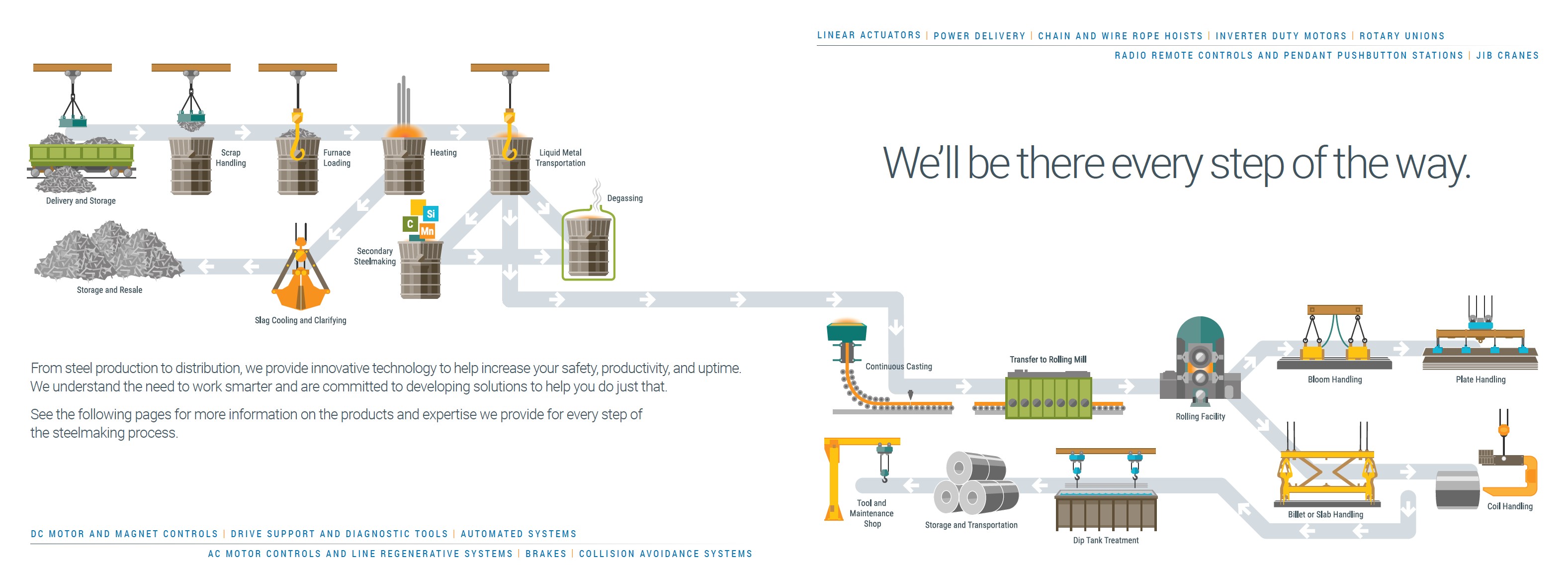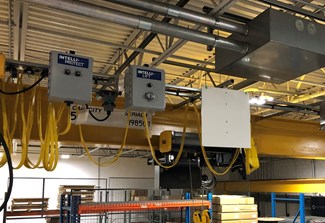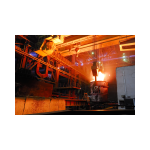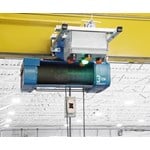Incorporating Smart Solutions into the Steelmaking Process
From steel production to distribution, innovative technology helps increase your safety, uptime, and productivity.
Metals |
Hoisting & Lifting Equipment |
Power & Motion Technology |
Automation |
By Sam Lotz |
Oct 07, 2020
The demand to incorporate smart solutions and automation throughout every step of the steelmaking process is rapidly increasing. From steel production to distribution, innovative technology helps increase your safety, uptime, and productivity.
Delivery, Storage, and Scrap Handling
After source materials are transported to a steel mill, metals are sorted using overhead cranes, often with magnets or grab devices.
Furnace Loading
Buckets loaded with scrap metal are transported to the melt shop. Charging cranes lift the scrap buckets for heating in either an electric arc or induction furnace.
Slag Handling
While in the furnace, impurities called slag float to the surface of the liquid steel. Slag pots located below the scrap bucket collect and channel slag away from the steel.
Liquid Metal Transportation
Once the scrap is heated to its liquid stage, the steel is tilted into ladle crane buckets. The ladle crane bay can transport multiple buckets to several additional processing locations, including secondary steelmaking, de-gassing, or continuous casting.
Continuous Casting and Rolling
From the ladle, hot metal is fed into the continuous caster, which shapes the steel for further rolling into its final shape.
Product Handling
The shaped steel must be handled by overhead cranes for transfer into storage or readying for shipment.
Dip Tank Treatment
If the shaped steel needs additional treatment, such as galvanization, a dip tank system may be used to immerse the metal in liquid.
Tool and Maintenance Shop
Auxiliary and maintenance cranes are used to change out components in need of repair or replacement and assist with general operation in all areas of a steel mill.
How Can Columbus McKinnon Help Improve the Steelmaking Process?
1). Safety
From operating cranes that handle thousands of pounds of scrap to those that transport liquid metal at high temperatures, safety of both workers and equipment is one of the core objectives in steel mill operation. Columbus McKinnon provides an extensive portfolio of crane solutions components in addition to complete packages of solutions, with built-in safety features designed to predict issues before they happen.
2). Uptime
Crane failures are inevitable in such hazardous environments. It is important at all stages to be able to predict when these failures will occur to get equipment back up and running, rather than reacting to unexpected breakdowns, especially when handling hot liquid metal or extremely heavy loads. Beyond both safety and productivity, making sure equipment and processes are operating at their full potentials means they must be utilizing the best components.
3). Productivity
Any inefficiency in the steelmaking process spells slowdowns or stoppages in the rest of the plant, which can cause major financial losses. Whether it’s providing real-time diagnostics to schedule predictive maintenance or automated lifting solutions for steel production lines, we have the technical expertise to design engineered-to-order solutions that are ideal for your specific applications.
Related Articles
From cranes handling thousands of pounds of scrap steel to those transporting liquid metal at very high temperatures, the safety of both workers and equipment is critical in a steel manufacturing plant. By building safety right into the equipment, systems and processes running in the steel mill, you can keep operators safe and better informed of what is going on through every step of the process.
Safety and Training |
Crane Systems |
Power & Motion Technology |
Metals |
Aug 26, 2020
When operating an overhead crane, safety is essential. Whether it's protecting operators from dangerous swinging loads or preventing cranes from colliding with one another, overhead crane safety systems allow you to build intelligence right into your overhead lifting system, helping keep your workers safe and your facility accident-free.
Let's take a closer look at five overhead crane safety systems that can have a significant impact on your operations.
Automation |
Crane Systems |
Hoisting & Lifting Equipment |
Power & Motion Technology |
Aug 26, 2021
North America - EN












